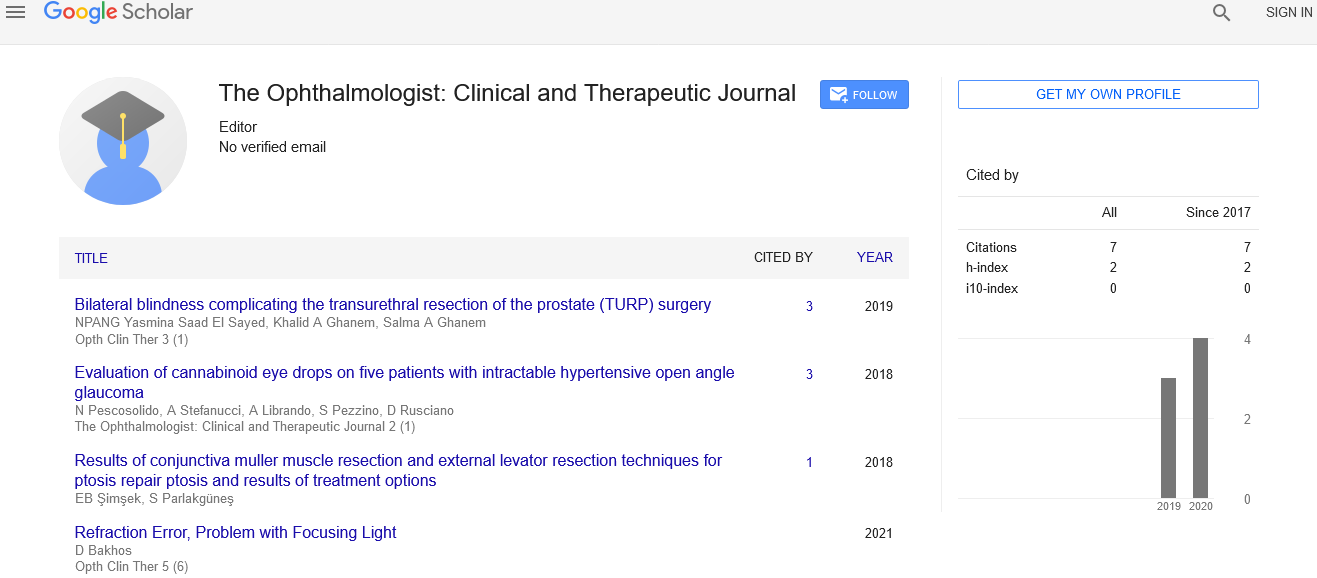
Sign up for email alert when new content gets added: Sign up
Abstract
Prevalence and distribution of refractive errors among adults in Athens-Greece (urban area)
Author(s): Pateras Evangelos* and Kazakidou ChrisiThe purpose of this research is to acquire a clear image about the
distribution of refractive errors in Greece and more specific in Athens
urban area. To calculate the type and rate of refractive errors. Α comparison
of the results with those of older studies was conducted.
Material and methods: The participants were healthy adult individuals how
did not suffer from any systemic of ophthalmic diseases. The participants
were undergone automated objective refraction, and then there was a
subjective refraction in each one of them with all these selective participants
reached a visual acuity 6/6. Statistical analysis was performed in order to
categorize the results and compared with other studies.
Results: Statistical analysis has shown that the mean spherical equivalent for
the right eye was R: -1,312 D, while for the left eye was L: -1,2362 D and
there was a high degree of positive correlation between the spherical
equivalent for the right and the left eye (r=0,858).
The average astigmatic error (CYL) was checked for the right eye and found
R: -0,233 D, while for the left eye L: -0,2194 D and there was also a high
degree of positive correlation of the astigmatic error between the right and
left eye.
In general, the frequency of myopia in the majority of the sample varied
from -0,50 D to -2,00 D (R.E.: 31,80% L.E.: 35,40%prevalence) and the
frequency of hyperopia is in the majority form +0,50 D to +2,00 D (R.E.:
19,80% L.E.: 18% prevalence).
The astigmatic error is appeared with its biggest rate to be at ±0,25 with
57,20% prevalence and as for the axis of astigmatism, it appears to be 180°
±20° in most cases.
In the population sample of 500 individuals, on the right eye, the myopic
prevalence rate was 63,33% while, the hyperopic prevalence rate was
36,67%, while for the left eye, the myopic prevalence rate was 61,12% the
hyperopic prevalence rate was 38,88%.
Conclusions: The prevalence of myopia is higher in Greek adult population,
than the prevalence of hyperopia in this region. There is a difference of
more than 40%. It seems that astigmatism is not a serious refractive
problem in this region compared to the rest of the world.
Full-Text | PDF




